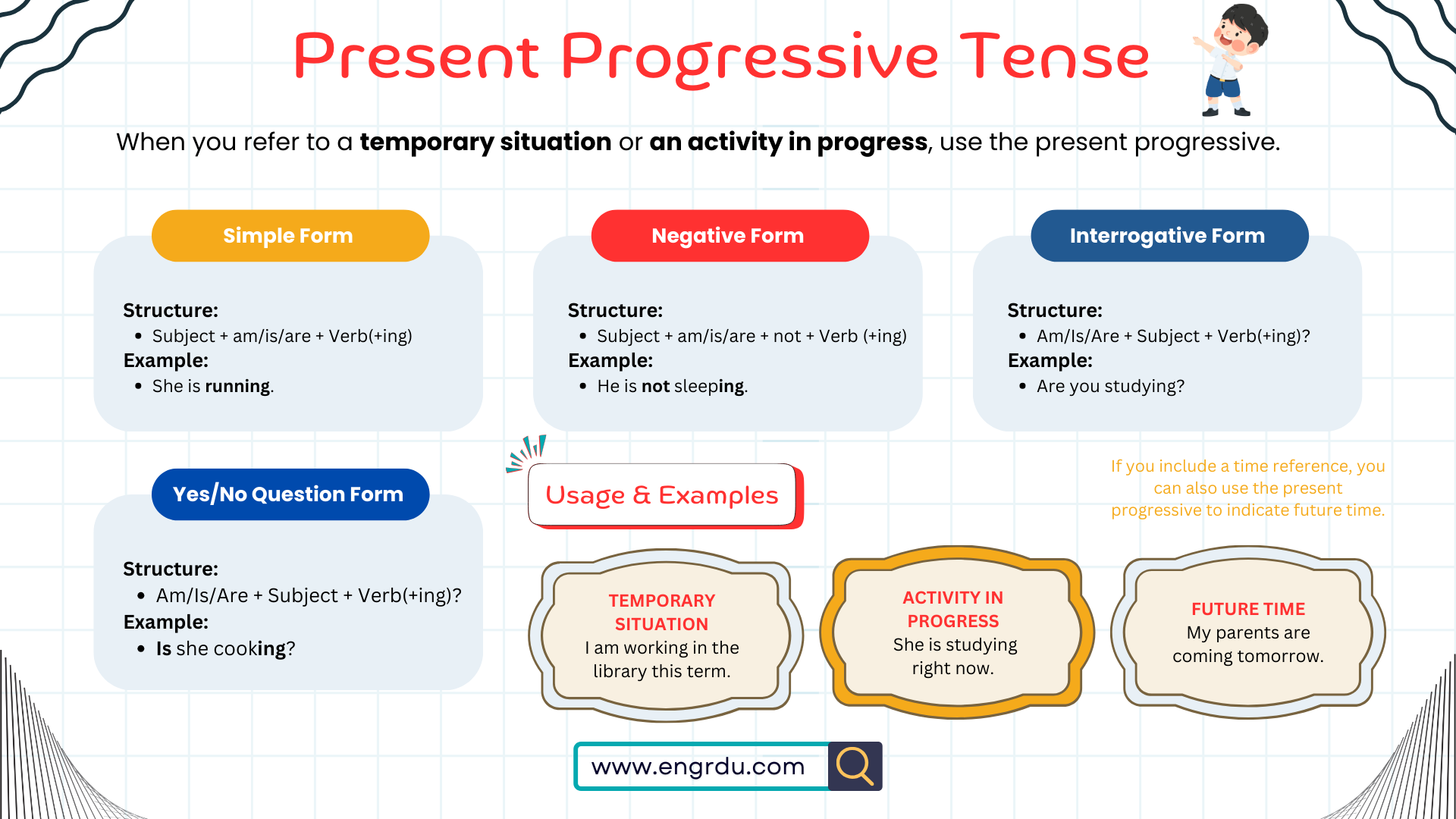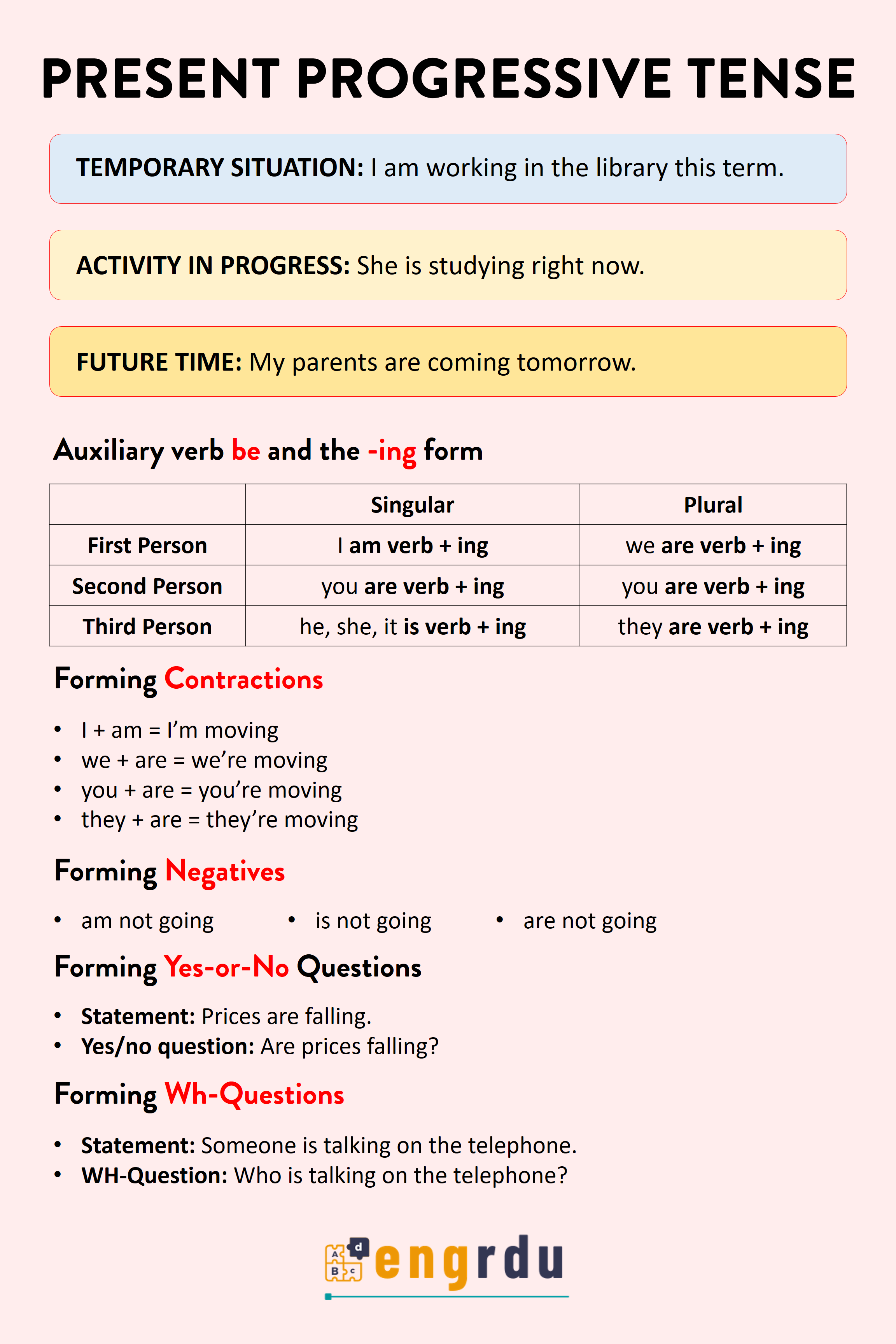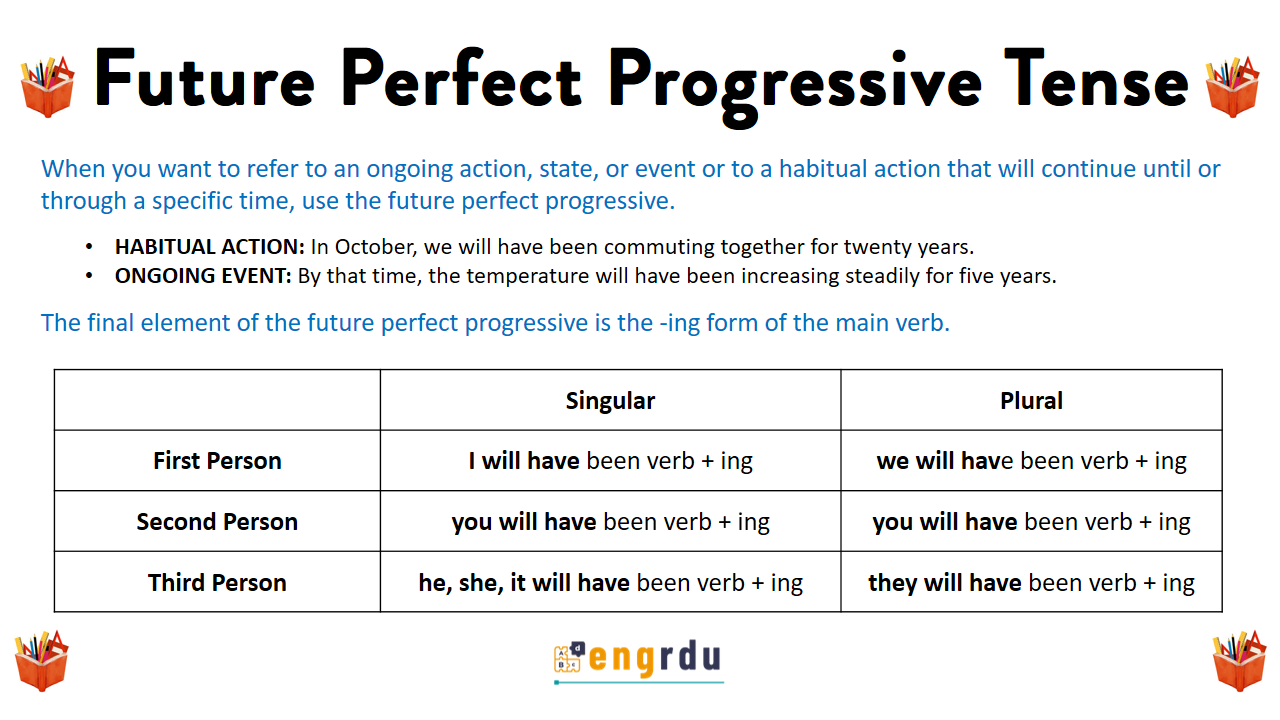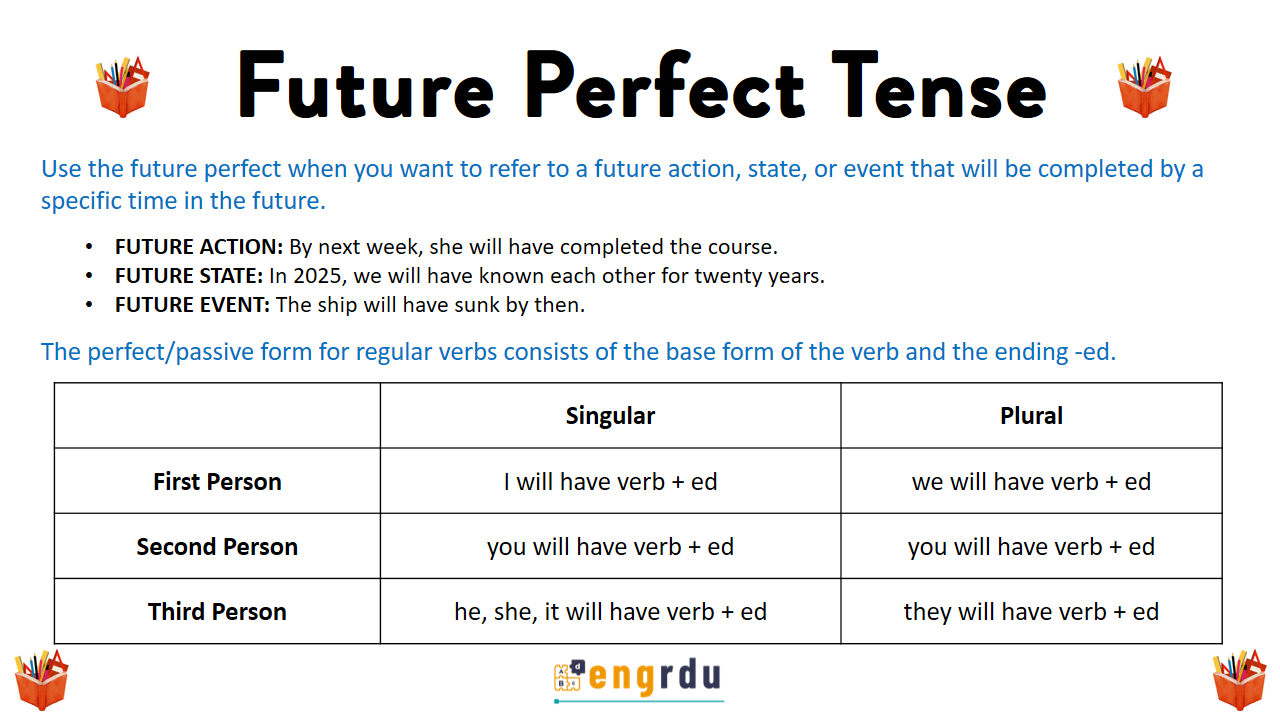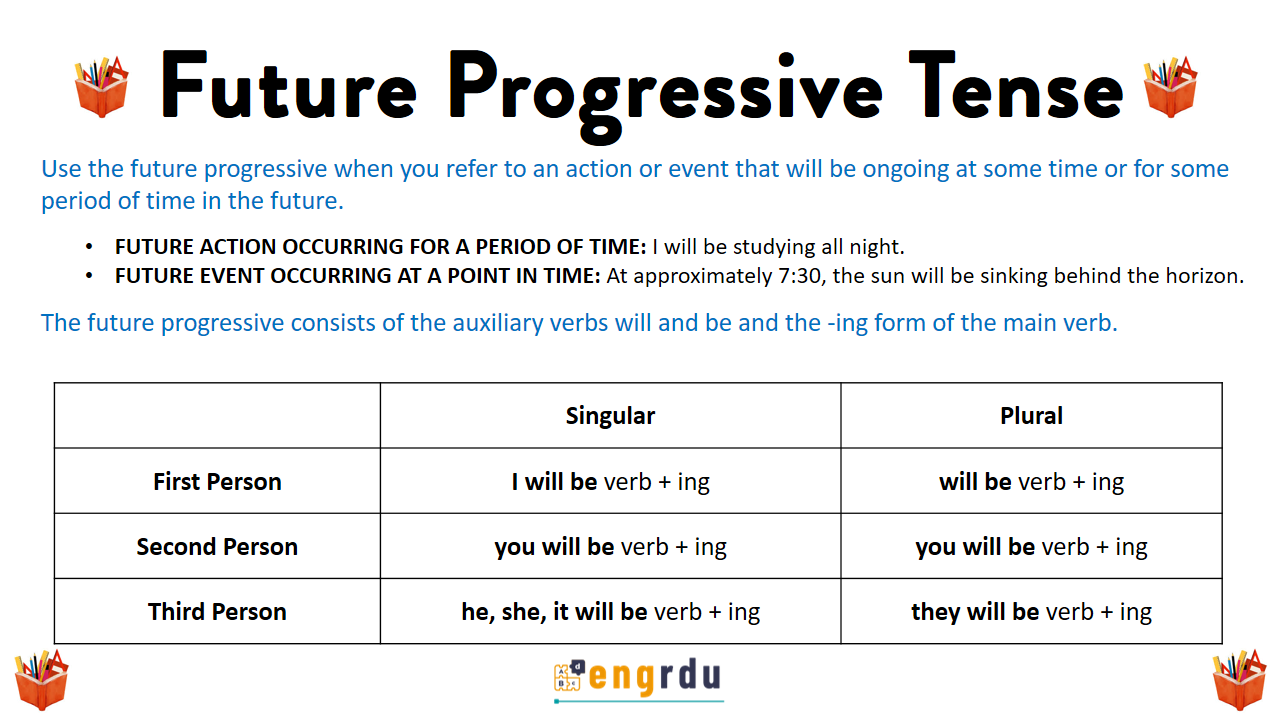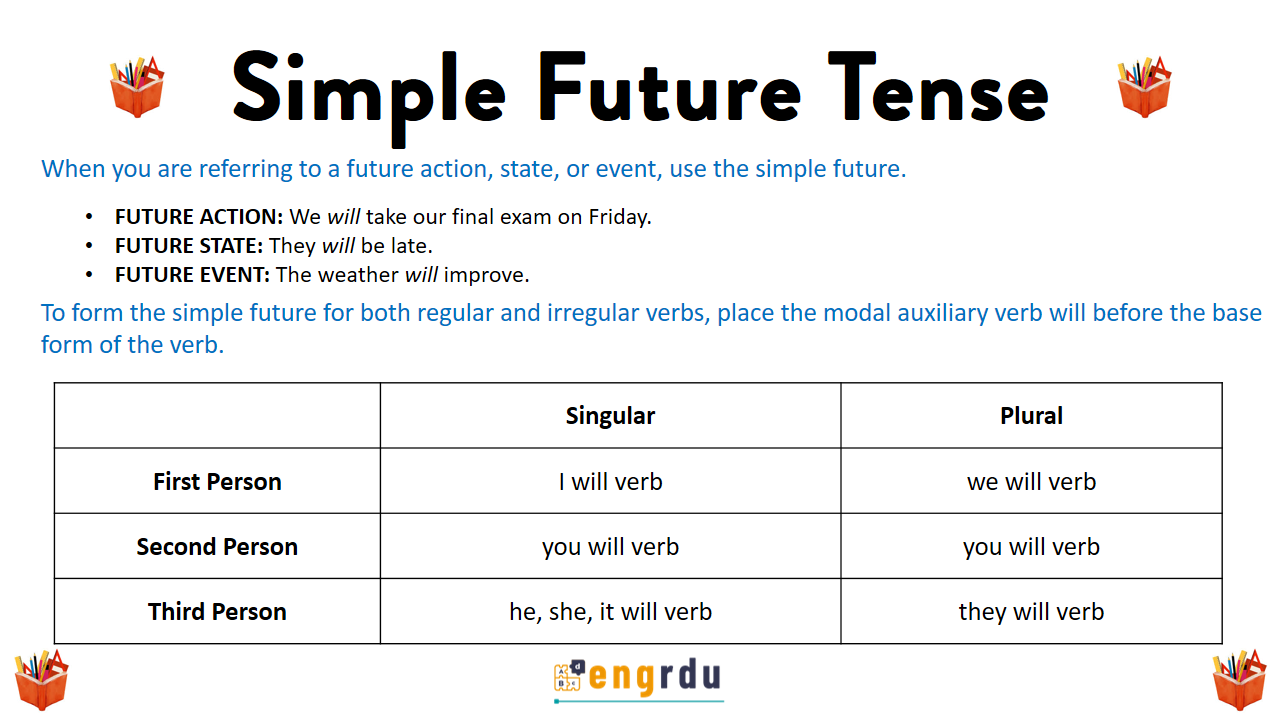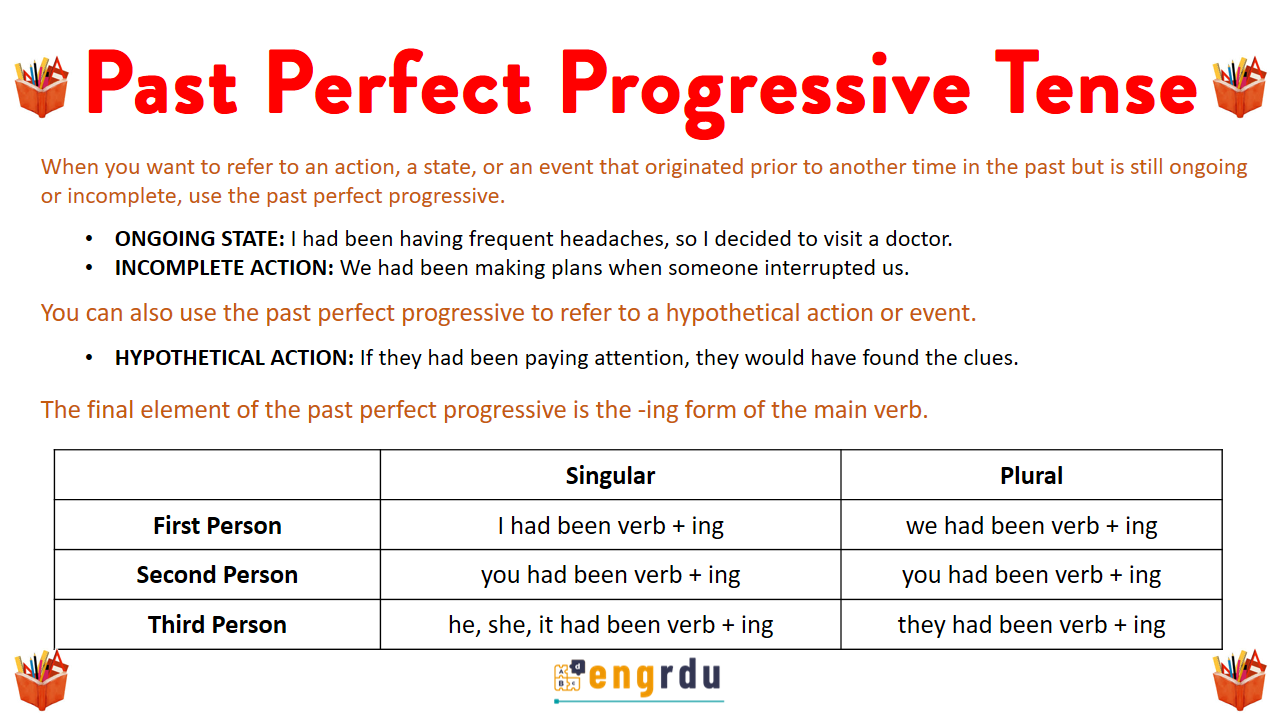In this blog post, you will learn about the present progressive tense, including its definition, rules, usage, and formulas. This lesson provides clear explanations with example sentences to help you understand this important aspect of English grammar. Mastering the present progressive tense will improve your ability to describe ongoing actions.
Present Progressive Tense
When you refer to a temporary situation or an activity in progress, use the present progressive.
- Temporary Situation: I am working in the library this term.
- Activity in Progress: She is studying right now.
If you include a time reference, you can also use the present progressive to indicate future time.
- Future Time: My parents are coming tomorrow.
The present progressive consists of the auxiliary verb be and the -ing form of the main verb. The auxiliary verb is marked for tense.
| Singular | Plural | |
| First Person | I am verb + ing | We are verb + ing |
| Second Person | You are verb + ing | You are verb + ing |
| Third Person | he, she, it is verb + ing | They are verb + ing |
When a one-syllable word or a word with a stressed final syllable ends in a single consonant sound, double the last letter before adding -ing.
- One-syllable word: run ➞ running
- Word ending in a stressed syllable: admit ➞ admitting
- BUT mow ➞ mowing [This word ends in a vowel sound.]
When a word ends with a consonant and the letter e, drop the e before adding -ing: come ➞ coming. The letter e is not dropped from words such as be, see, and free.
Forming Contractions
Contractions are often formed by combining a pronoun and the auxiliary verb be. You will often hear these contractions in conversation or see them in informal writing, but you will rarely find them used in formal contexts.
Notice that an apostrophe indicates that a letter is omitted:
- I + am = I’m moving
- we + are = we’re moving
- you + are = you’re moving
- they + are = they’re moving
- he + is = he’s moving
- she + is = she’s moving
- it + is = it’s moving
Forming Negatives
To make a present progressive verb negative, place it after the auxiliary verb.
- am not going
- is not going
- are not going
Forming Contractions
The following contractions can be used in conversation and informal writing:
- I’m not going
- He’s not working
- You’re not working
- He isn’t working
- You aren’t working
- She’s not working
- We’re not working
- She isn’t working
- We aren’t working
- It’s not working
- They’re not working
- It isn’t working
- They aren’t working
Forming yes-or-no Questions
To form yes/no questions, begin the question with the auxiliary verb be. After the auxiliary verb, place the subject and the -ing form of the main verb.
- Statement: Prices are falling.
- Yes/no question: Are prices falling?
Forming Wh-Questions
In wh-questions, when the question word is the subject of the sentence, the form of the question is similar to the form of a statement.
- Statement: Someone is talking on the telephone.
- WH-Question: Who is talking on the telephone?
When the question word is any other part of the sentence, the auxiliary verb be comes after the question word and is followed by the subject and the -ing form of the main verb.
- Statement: They are going to the store.
WH-Question: Where are they going? - Statement: He is writing a play.
WH-Question: What is he writing?
Exercises for Present Progressive Tense
Exercise-1
Complete each sentence with the present progressive form of the verb in parentheses. Circle the reason that the present progressive is used.
1. I ——— (study) English this term.
(a) Temporary situation (b) Activity in progress (c) Future time
2. We ——— (go) home tomorrow.
(a) Temporary situation (b) Activity in progress (c) Future time
3. Right now, I ——— (write) a letter.
(a) Temporary situation (b) Activity in progress (c) Future time
4. The bus ——— (pull) up to the curb at this very moment.
(a) Temporary situation (b) Activity in progress (c) Future time
5. They ——— (move) to Florida at the end of the month.
(a) Temporary situation (b) Activity in progress (c) Future time
6. The kids ——— (act) silly right now.
(a) Temporary situation (b) Activity in progress (c) Future time
7. I ——— (use) my friend’s car today.
(a) Temporary situation (b) Activity in progress (c) Future time
8. We ——— (eat) early tonight.
(a) Temporary situation (b) Activity in progress (c) Future time
9. The company ——— (have) problems this year.
(a) Temporary situation (b) Activity in progress (c) Future time
10. My neighbor ——— (mow) his lawn.
(a) Temporary situation (b) Activity in progress (c) Future time
11. I ——— (turn) in my paper tomorrow.
(a) Temporary situation (b) Activity in progress (c) Future time
12. Steve ——— (live) with his cousin this year.
(a) Temporary situation (b) Activity in progress (c) Future time
13. It ——— (snow).
(a) Temporary situation (b) Activity in progress (c) Future time
14. Several police officers ——— (stand) in front of the store.
(a) Temporary situation (b) Activity in progress (c) Future time
15. You ——— (speak) too loudly.
(a) Temporary situation (b) Activity in progress (c) Future time
16. The sky ——— (grow) dark.
(a) Temporary situation (b) Activity in progress (c) Future time
Exercise-2
Complete each sentence with either the simple present or the present progressive.
1. Jim ——— (sell) cars for a living.
2. Jim ——— (sell) his car to his sister.
3. I ——— (boil) some water for tea.
4. Water ——— (boil) at one hundred degrees centigrade.
5. We always ——— (visit) our grandparents during the holidays.
6. This year we ——— (visit) our grandparents during the holidays.
7. Jean ——— (go) to a lot of movies.
8. Jean ——— (go) to a movie today.
9. I ——— (do) my homework right now.
10. I generally ——— (do) my homework in the evening.
Read More

